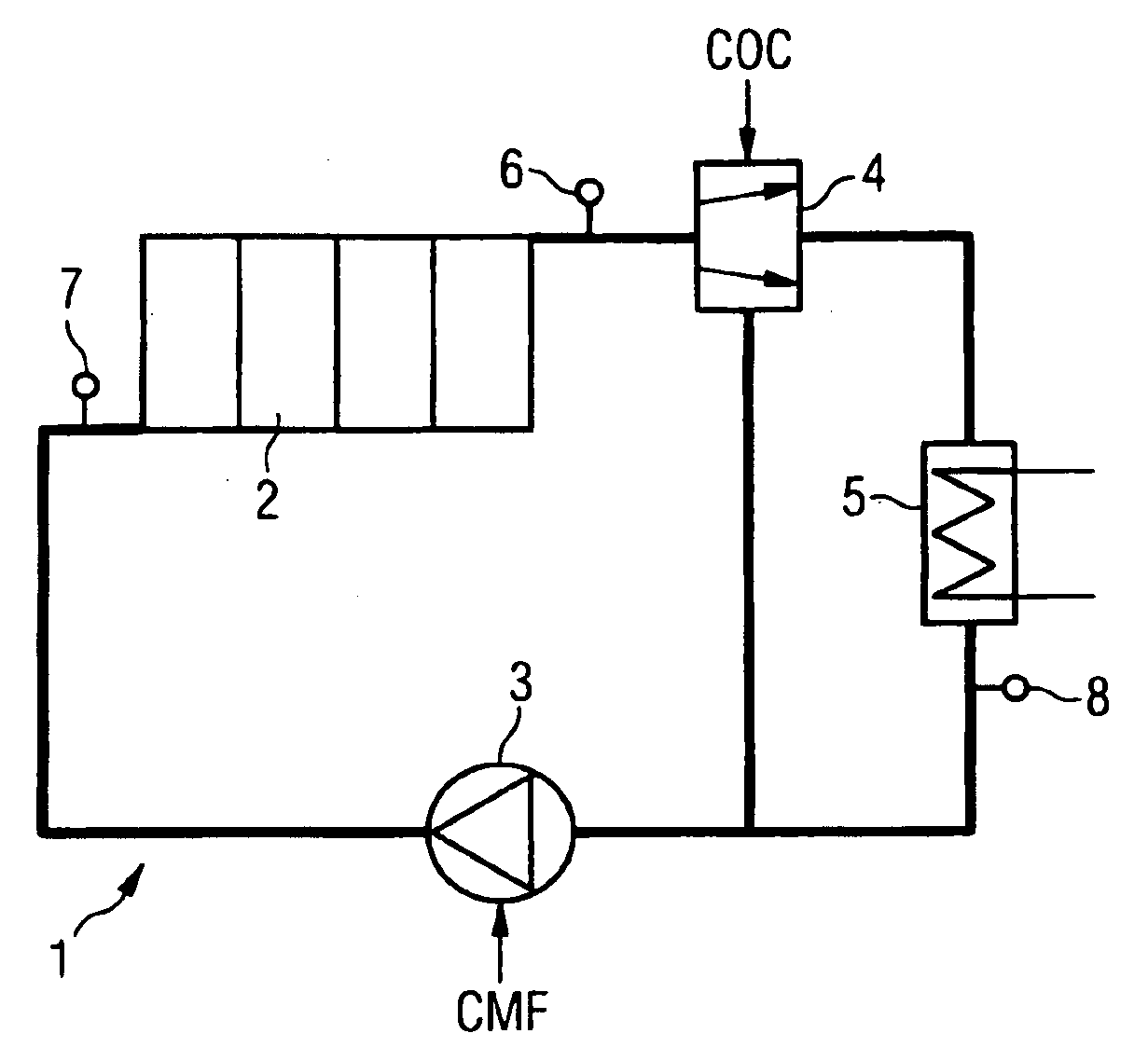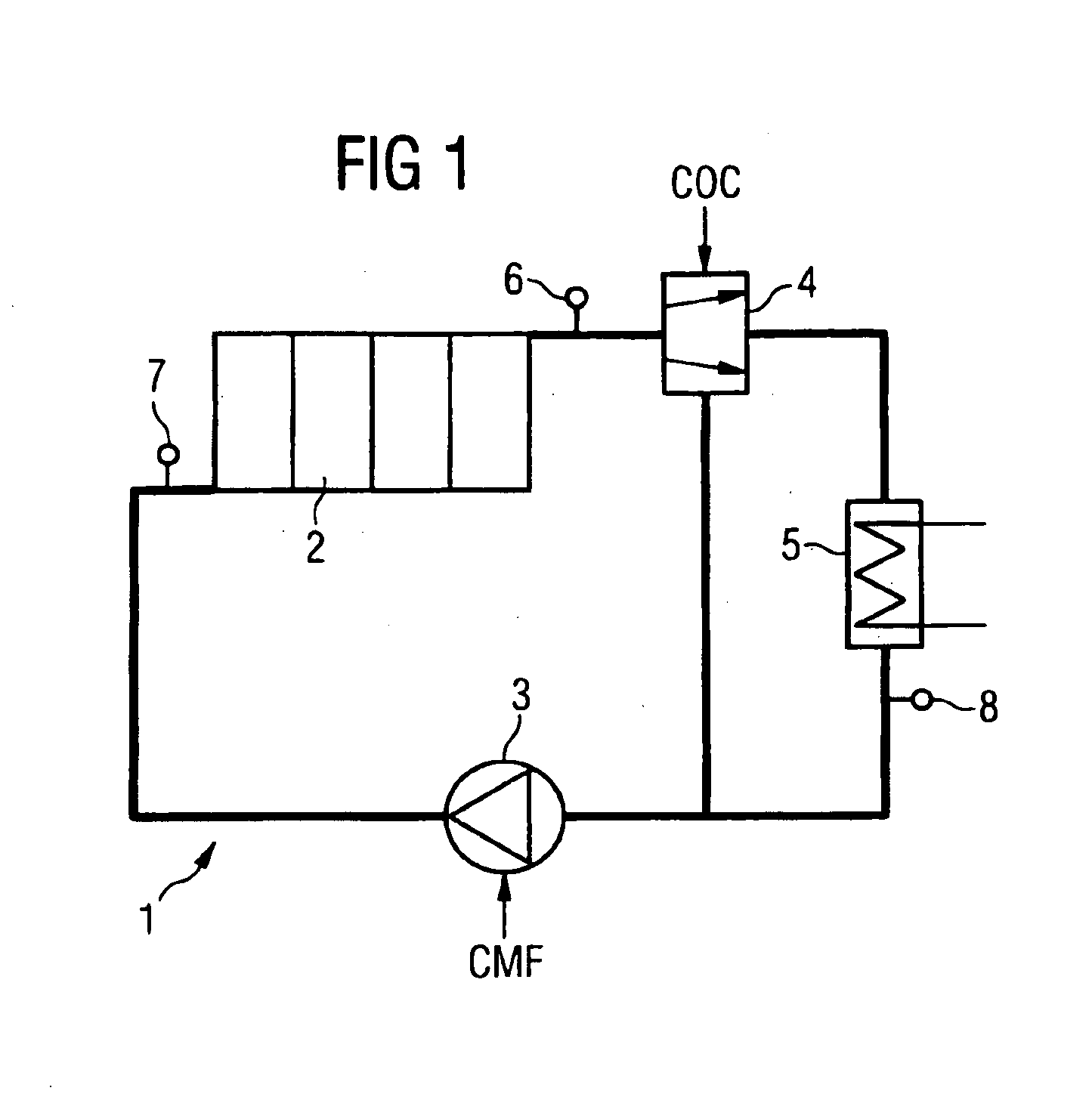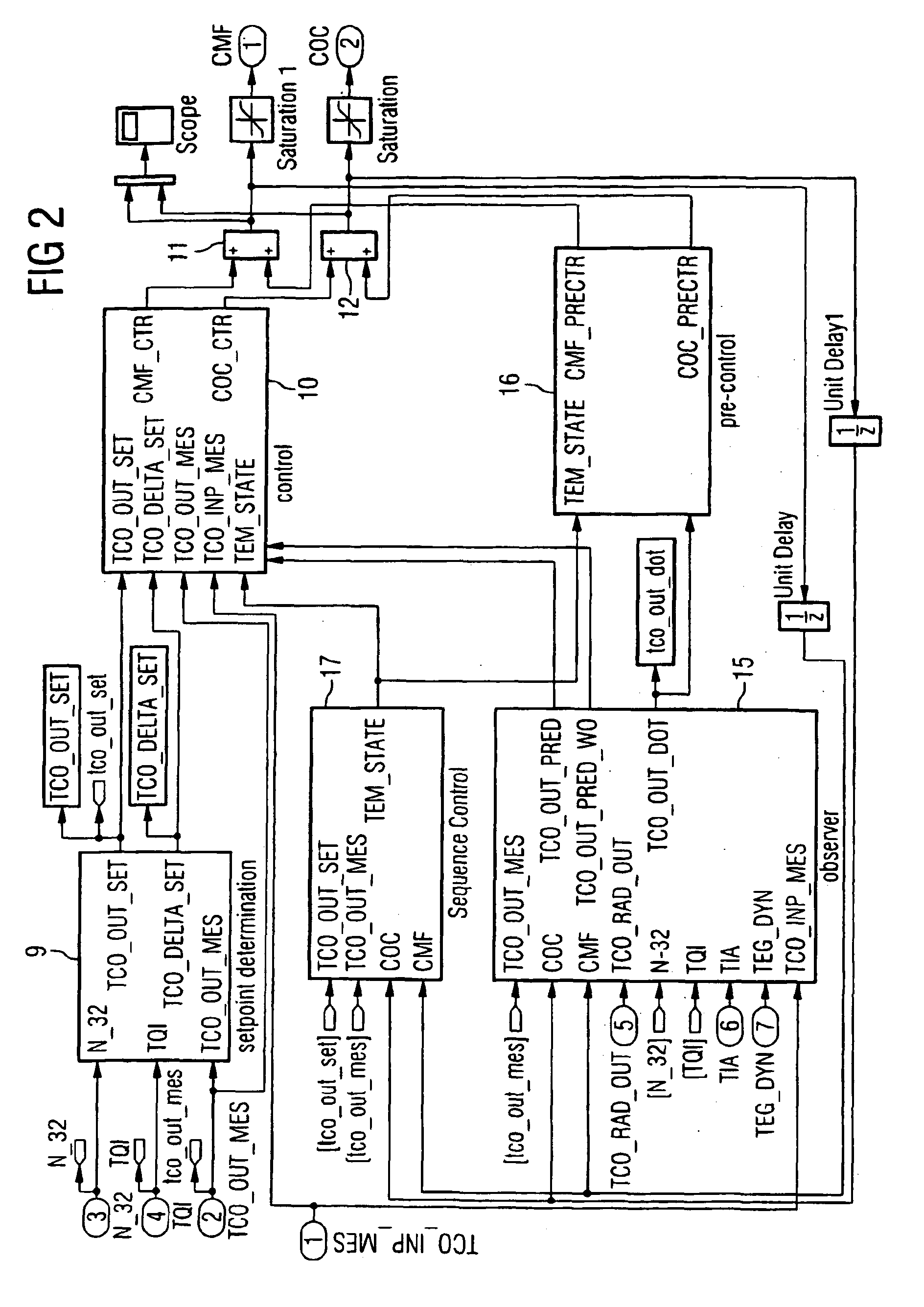Method for adjusting coolant temperature in an internal combustion engine
a technology for internal combustion engines and coolants, which is applied in the direction of engine cooling apparatus, engine controllers, electric control, etc., can solve the problem of light additional energy consumption
- Summary
- Abstract
- Description
- Claims
- Application Information
AI Technical Summary
Benefits of technology
Problems solved by technology
Method used
Image
Examples
Embodiment Construction
[0014]FIG. 1 is a schematic representation of the coolant circuit 1 of an internal combustion engine 2. The coolant circuit 1 includes a coolant pump 3 and a bypass valve 4. The coolant pump 3 is an electrically driven pump, for example, a radial pump of which the rotational speed can be controlled. The bypass valve 4 that routes the coolant flow coming from the internal combustion engine 2, depending on its position, through the radiator 5 or passing radiator 5 to the coolant pump 3 is a distributing valve whose position can be controlled electrically in which case, as a function of the setting of the bypass valve 4, a greater or lesser coolant flow is routed through the radiator 5.
[0015]FIG. 1 further shows temperature sensors 6, 7 and 8 by means of which the coolant temperature is detected at the outlet and inlet of the internal combustion engine 2 as well as at the outlet of the radiator 5. However, it should be pointed out that no separate temperature sensor is required for det...
PUM
 Login to View More
Login to View More Abstract
Description
Claims
Application Information
 Login to View More
Login to View More - R&D
- Intellectual Property
- Life Sciences
- Materials
- Tech Scout
- Unparalleled Data Quality
- Higher Quality Content
- 60% Fewer Hallucinations
Browse by: Latest US Patents, China's latest patents, Technical Efficacy Thesaurus, Application Domain, Technology Topic, Popular Technical Reports.
© 2025 PatSnap. All rights reserved.Legal|Privacy policy|Modern Slavery Act Transparency Statement|Sitemap|About US| Contact US: help@patsnap.com



